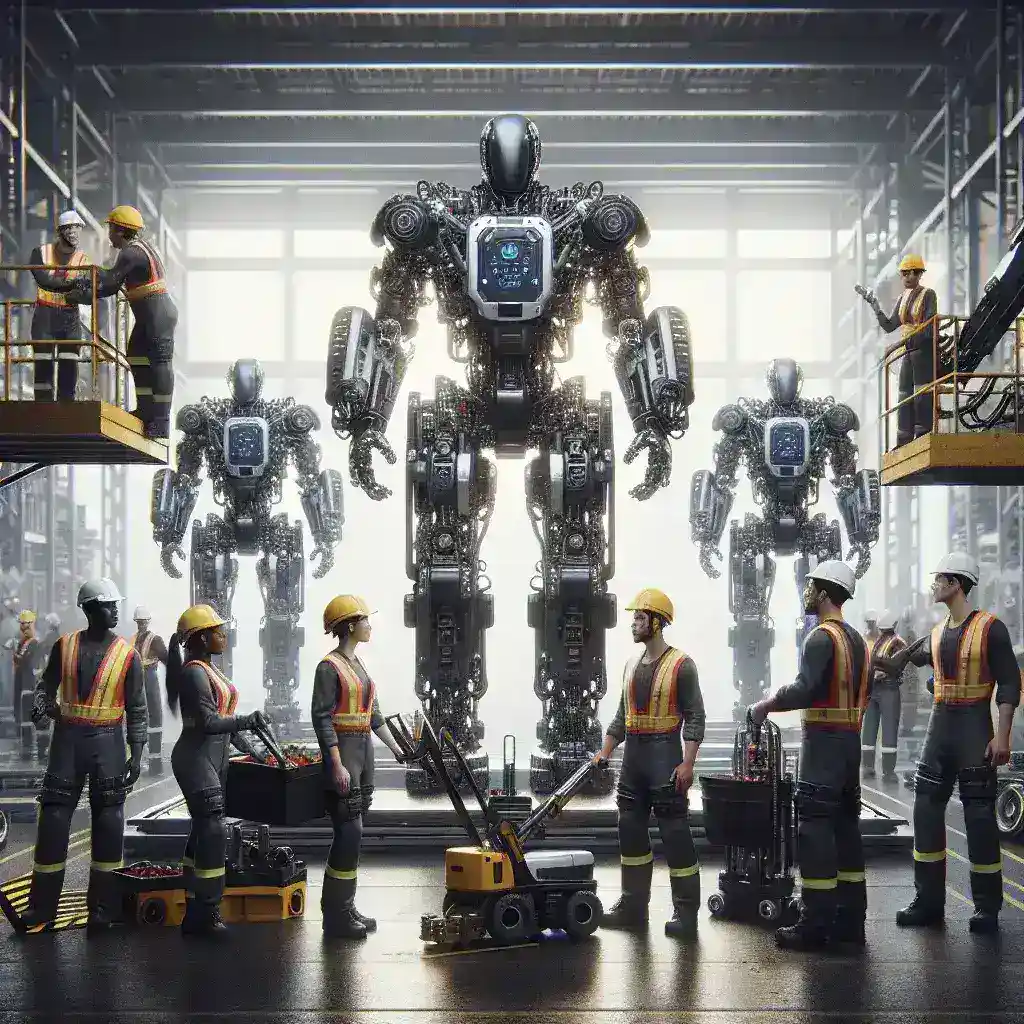Introduction
In the modern industrial landscape, the demand for efficiency and safety is at an all-time high. As industries strive to enhance productivity and reduce workplace injuries, innovative technologies are paving the way for a new era of labor. Among these advancements, AI robotic exosuits stand out as a transformative solution, enabling industrial workers to lift extreme weights safely and effectively. This article delves into the mechanics, benefits, challenges, and future of AI robotic exosuits in industrial settings.
What are AI Robotic Exosuits?
AI robotic exosuits, also known as exoskeletons, are wearable robotic devices designed to enhance the physical capabilities of the wearer. These suits provide support to the body, particularly the back and limbs, allowing workers to lift, carry, and maneuver heavy objects with significantly less physical strain. Equipped with sensors and artificial intelligence, these exosuits can adapt to the user’s movements, providing real-time feedback and assistance.
Historical Context
The concept of robotic exoskeletons is not entirely new. The origins of exoskeleton technology can be traced back to the 1960s, when the U.S. military explored the potential of powered suits for soldiers. However, it wasn’t until recent advancements in robotics and AI that these exosuits became viable for industrial applications. Today, companies across various sectors, from manufacturing to logistics, are adopting this innovative technology to enhance their workforce.
How AI Robotic Exosuits Work
AI robotic exosuits function through a combination of mechanical structures and advanced software systems. Key components include:
- Actuators: These are the muscles of the exosuit, providing the necessary force to assist the wearer in lifting and moving heavy objects.
- Sensors: The exosuit is embedded with sensors that detect the user’s movements and physical exertion, enabling the suit to respond in real time.
- Control Algorithms: The AI-driven control systems analyze the data collected from the sensors to optimize the suit’s performance, ensuring smooth and efficient movement.
- Power Supply: Most exosuits are powered by batteries, allowing for mobility without the constraints of wired connections.
Benefits of AI Robotic Exosuits
The implementation of AI robotic exosuits in industrial settings presents numerous advantages:
1. Enhanced Safety
One of the most significant benefits of exosuits is their ability to reduce the risk of workplace injuries. By providing support to the back and limbs, these suits minimize strain on the body, decreasing the likelihood of musculoskeletal disorders, which are common in physically demanding jobs.
2. Increased Productivity
With the assistance of exosuits, workers can lift heavier loads with ease, leading to improved efficiency. Tasks that once required multiple workers can often be accomplished by a single individual wearing an exosuit. This not only boosts productivity but also reduces labor costs.
3. Worker Empowerment
Exosuits can enhance the confidence and morale of workers by enabling them to perform tasks that they may have previously found difficult or impossible. This empowerment can lead to higher job satisfaction and retention rates.
4. Adaptability
AI robotic exosuits are designed to adapt to various tasks and environments, making them suitable for a wide range of industries. Whether in construction, warehousing, or manufacturing, these suits can be tailored to meet specific operational needs.
Challenges and Considerations
Despite the numerous benefits, the adoption of AI robotic exosuits does come with challenges:
1. Cost
The initial investment in exosuit technology can be substantial, which may deter some companies from implementing it. However, the long-term savings in labor costs and injury-related expenses can justify the expenditure.
2. Training and Adaptation
Workers may require training to effectively use exosuits, as the technology can be complex. Organizations must invest in proper training programs to ensure that employees can maximize the benefits of the suits.
3. Maintenance and Reliability
Regular maintenance is essential to keep exosuits in optimal condition. Companies must establish protocols for checking and repairing the equipment to ensure reliability and safety.
Real-World Applications
Several industries have begun to adopt AI robotic exosuits with promising results:
1. Construction
In the construction industry, workers often face strenuous tasks that require lifting heavy materials. Exosuits provide the necessary support to reduce fatigue and injuries, allowing workers to perform their tasks more efficiently.
2. Warehousing and Logistics
Warehouse workers frequently handle heavy boxes and equipment. Exosuits enable them to lift and move goods safely, improving overall productivity and reducing injury rates.
3. Manufacturing
In manufacturing, workers can utilize exosuits for assembly lines where repetitive lifting is required. The ergonomic support helps them maintain better posture, leading to fewer long-term health issues.
Future Predictions
The future of AI robotic exosuits looks promising. As technology continues to advance, we can expect:
1. Greater Integration of AI
Future exosuits will likely incorporate more sophisticated AI algorithms, allowing for even better adaptability and support based on individual user needs.
2. Wider Adoption Across Industries
As more companies recognize the benefits of exosuits, their adoption will expand beyond traditional sectors, including healthcare, agriculture, and even entertainment.
3. Decreased Costs
With advancements in technology and increased competition among manufacturers, the costs associated with AI robotic exosuits are expected to decrease, making them more accessible to businesses of all sizes.
Conclusion
AI robotic exosuits represent a revolutionary advancement in workplace technology, enabling industrial workers to tackle extreme weights with safety and efficiency. While challenges remain, the benefits are undeniable, paving the way for a more productive and safer industrial landscape. As technology evolves, the potential for exosuits to reshape the future of work becomes increasingly evident, empowering workers and organizations alike to reach new heights.

